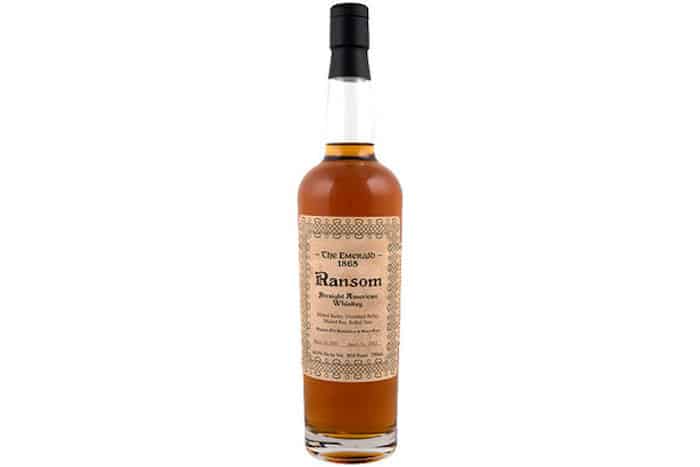Traditionally corn, barley, wheat and rye give whisk(e)y its main distiller cereals. Yet also other more or less odd plants forming starch-containing grains contribute to the production of distilled spirits throughout the world.
Oat Whiskey
Thanks to large husks oat improves wort filterability. That’s why for many years oat was included in the mash bill intended to produce Irish whiskey. Because of its low yield, unmalted oat is no longer used since the mid 70’s. Yet, the process advantage of oat really relies on large hulls and husks of grains acting as an efficient natural filter and its favorable influence on providing specific flavors. This is why the Australian Belgrove Distillery experimented with its oat whisky (65 % oat) and validated the recipe after tasting.
In Scotland, InchDairnie distillery, built in 2016, had one of many experimental ideas to produce oat whisky using varieties fitting distillers’ requirements. These are winter-grown cereals from both white and black varieties, rather than spring ones used for porridge. A blend with distilling malt counterbalances a low level in the enzymes needed to convert starch into sugar. Spirit ages into first-fill bourbon casks, with half Portuguese Moscatel barrels. As no separate definition for oat whisky under the Scotch whisky regulations exists, this product is classified as single grain whisky.

In the United States, oat is more common where a number of distilleries add it in the mash. Adds range from 15%, giving an ‘Irish style’ to The Emerald whiskey from Oregon’s Ransom distillery, to 100% oat of Stone Barn and Koval whiskeys. Intermediate amounts of oat are widely used as well in Tennessee-based microdistillery Corsair’s blend of coffee malt & oats Oatrage and with Signature Craft Harvest Collection from Jim Beam.
Taste is fantastic with creaminess added to notes of caramel and a creamy finish. Oat whiskey ages mainly in American oak for at least three years. Some brands got an organic label, like the 100 % oat Koval 80 proof single barrel while High West Distillery distills an unaged new make oat whiskey (85% oats and 15% barley malt) with a very unique and incredibly smooth taste.
Buckwheat spirits
This pseudo-cereal produces starch-containing grains used for human food. It belongs to the Polygonaceae family of plants with a botanical name Fagopyrum esculentum and with many subspecies and varieties. Originated from southwestern of China and the foothills of the Himalayas, this plant is known in India as well particularly for a day of a festival dedicated to food items made only from buckwheat grains. It was introduced in the 15th century in Europe and later in the 17th century in the US by the first settlers.
Only a few varieties are available, although a recent development in Europe and Canada allowing a complete dispersal around the globe of this plant was achieved in 2006. Currently in development, new varieties in the US will relay the relative low availability of certified seeds. This plant is not sensitive to common plant pests.
It outperforms most small grain plants thanks to its adaptability to low-fertility soils like in Brittany (French blé noir or sarrasin). There, people uses buckwheat grains for long times instead of conventional wheat used in other French regions. Gluten free, the flour comes with a high nutritional value containing omega-3 and omega-6 fatty acids, minerals, vitamins, polyphenols and aromatic compounds in high amounts, making this grain unique for its contribution to the aromatic profile of final products.
Hence, for a distiller, buckwheat offers the perspective to produce distilled spirits with odd aromas, with the drawback being of a low yield – about two-fold less than with barley.
Marketed whiskies made from buckwheat grains are available in Europe (France – Brittany). La Distillerie des Menhirs has been producing whisky since 1999. Whisky Eddu Silver, released in 2002, is the first ever-worldwide 100 % buckwheat whisky. This distillery uses local ground water and 2 Cognacais stills of 25 hl. It ages in 100% French wood casks (350 L), either in used Cognac casks or in new casks made with wood of oaks from the Breton Brocéliande forest.
This 100 % buckwheat whisky gives a nose of complex fruity notes of citrus, grilled hazelnut, combined with floral rose and heather notes. Additional fruity notes reminiscent of apple, orange peels, stewed apricot add complexity with spicy notes of cinnamon and nutmeg.
Another French distillery, la Roche-aux-Fées, distills an organic new make from rye, wheat, barley and buckwheat Ki Gwenn. Finally, a third distillery, Naguelann, produces a blend (Mesk in Breton language). Mesk Tantad is a whisky blend of spirits from three different distilleries. (1) 50% malted barley whisky from the Naguelann distillery aged 18 months, (2) 25% malted barley whisky of a 3 to 5 years old from the Warenghem distillery and (3) 25% of a 3 to 5 years old whisky 100 % Buckwheat from la Distillerie des Menhirs.







